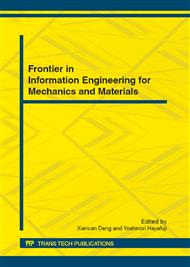p.334
p.340
p.345
p.350
p.355
p.359
p.364
p.369
p.374
Improvement of Quality and Efficiency in Mineral Material Processing under Extreme Dynamic Environments
Abstract:
In mineral processing the high material volumes yield the fact that benefits of even small improvements in the production quality and product efficiency are remarkable. During the operation of the mineral material processing, the grinding circuit (GC) is the key unit and its product particle size and circulating load are two controlled indexes directly related to the quality and efficiency of the whole mineral material processing. Therefore, an appropriate control of GC is especially significant to improve the operation performance of the mineral material processing. Due to the GCs are essentially multivariable dynamic systems with high interaction among process variables. It is hard to improve the quality and efficiency in the mineral material processing by controlling the grinding system with the conventional methods. In this paper, a novel multivariable decoupling control scheme is adopted to handle such intricate process. Simulations have shown the proposed method can greatly improve the production quality and product efficiency of the mineral material processing.
Info:
Periodical:
Pages:
355-358
Citation:
Online since:
July 2012
Authors:
Price:
Сopyright:
© 2012 Trans Tech Publications Ltd. All Rights Reserved
Share:
Citation:


